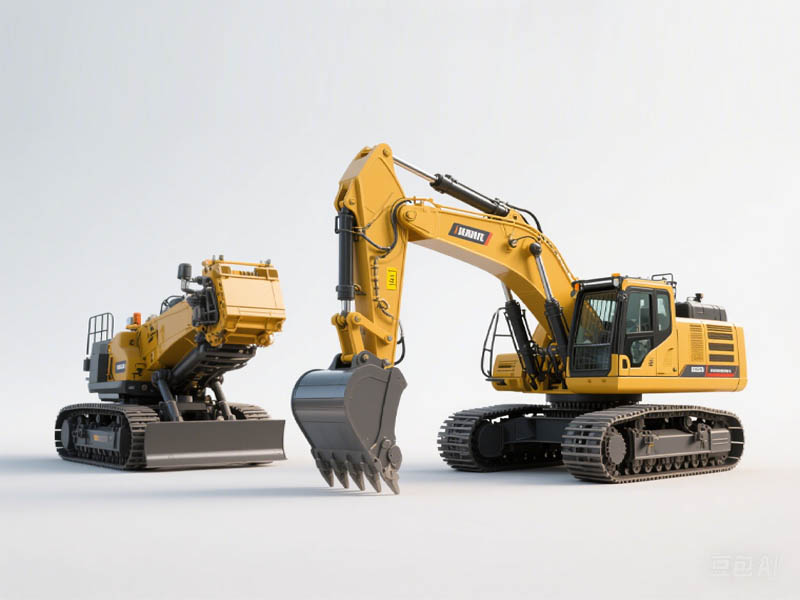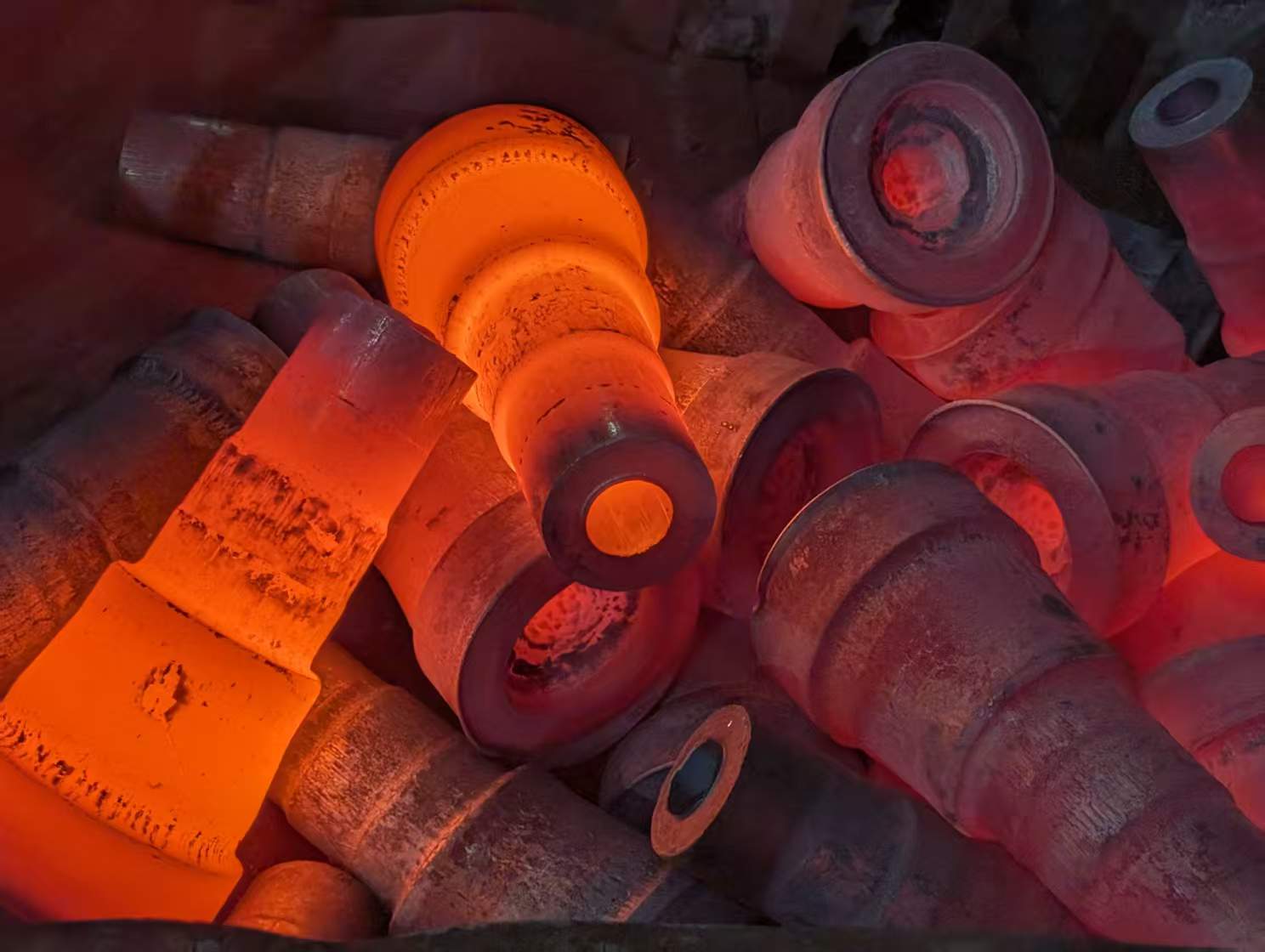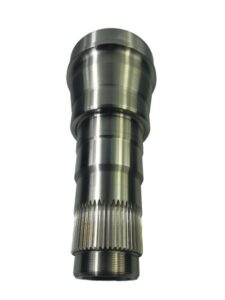Focus on transmission, axle, hydraulic cylinder and safe operation scenarios
The significance of forging in engineering/mining equipment
Engineering mining equipment is constantly exposed to harsh conditions of high load, high impact, and high wear. Therefore, for key components, forging technology is required to improve the internal structure of the metal through plastic deformation, enhancing its strength and toughness. As a result, forging is the preferred manufacturing process for key components such as transmissions, axles, and hydraulic cylinders, playing a crucial role in ensuring the safety of mining operations.
1. Transmission gear and transmission components
The heavy load impact
of the gearbox of mining equipment is large and frequent operation, which requires the gear shaft and gear/gear ring to have high strength performance guarantee:
Gear and drive shaft:
alloy steel forgings (generally 4140, 4143) and carburizing treatment, improve the surface strength, refine the grain, increase the bending strength by more than 30%, avoid the risk of failure of the gear shaft, life than casting parts increase 200%, reduce the cost of after-sales


2. Mining vehicle axle (drive axle and steering axle)
Axle is the core
bearing and transmission component of mining trucks. Key applications of forging technology include:
Axle axle:
The use of medium carbon alloy steel forgings (such as 4143, 4140), the need for high torsional strength, and to avoid the safety accident of fracture in heavy transportation.
Differential gear:
closed die forging and quenching to ensure tooth surface hardness (HRC 58-62) and core toughness, suitable for rough road conditions.
3. Hydraulic cylinder assembly
- In the hydraulic system of mining equipment (such as hydraulic supports, excavator arms), forging parts are indispensable in the following parts:
- Cylinder bottom, earring, piston rod: 42CrMo/4140 forged steel, tensile strength ≥900MPa after tempering treatment, corrosion resistant coating further prolonging life;
The toughness and anti-loosening ability of the lock nut must ensure the tightness and anti-loosening after frequent movement. - Cylinder and flange: forging parts than welding and casting, pressure capacity increased by 50%, life increased by 300%.

4. Components related to mining safety operations
Forging technology directly improves equipment safety performance:
Support structure:
The forged top beam and base of the hydraulic support have higher compressive stability (such as Q690D high-strength steel forgings), anti-deformation, and ensure the braking reliability of heavy mining cards.
Second,
the performance advantage analysis of forging parts
Performance index
High strength and toughness
Fatigue resistance
Abrasion resistance
reliability
securitization

5. Comparison of service life
Mine truck transmission gear
Cast gear: Life of about 8,000 hours, prone to pitting and broken teeth.
Forged gear: Life of 12,000-15,000 hours, and maintenance rate reduced by 200%.
Hydraulic support piston rod
Rolled parts: easy to bend and deform when the pressure is 100MPa, lack of hardness.
Forging parts: pressure 150MPa still maintains straightness, suitable for deep mine.

6. conclusion
Forging technology has irreplaceable advantages in the transmission, axle, hydraulic system and safety parts of mining equipment, and directly reduces the failure rate and maintenance cost of equipment by improving strength, wear resistance and reliability. We are a professional manufacturer of forgings, with full-station inspection equipment.
Main forging standard system
American standard system
ASTM Standard:
A668: Carbon and alloy steel forgings for general industrial use
A788: General requirements for steel forgings
A291: Carbon and alloy steel forgings for gears
SAE standard:
J404: Chemical composition standard
J770: Standard for mechanical properties
ASME standard:
Section VIII: Requirements for forgings of pressure vessels
B16.34: Standard for valve forging
European standards system
EN standard:
10250: Steel forgings for general engineering
10222: Steel forgings for pressure vessels
10243: Precision forgings tolerance standard
DIN Standard:
17200: Carbon steel forging
17210: alloy steel forgings
ISO standard:
4955: Heat-resistant steel forgings
683-1: Heat-treated steel forgings

Second, classification of conventional forging materials
Carbon steel forging
USA: AISI 1045, 4140
Europe: C45, 42CrMo4, 35MnCr5,18CrNiMo7-6
Carbon steel application field characteristics:
Best cost effective
Suitable for general load parts
The surface hardness can reach HRC 55-60
Alloy steel forgings, main types:
Chrome Molybdenum Steel (AISI 4130/4140)
Nickel chromium Molybdenum Steel (AISI 4340)
European corresponding brand (34CrNiMo6), performance advantages:
The tensile strength can reach 1500MPa
Excellent hardenability
Good low temperature toughness
Special alloy forgings
Stainless steel series:
Martensitic stainless steel (AISI 410)
Austenitic stainless steel (AISI 304/316)
Application fields of alloy steel:
Extreme corrosive environment
High temperature and high pressure condition
